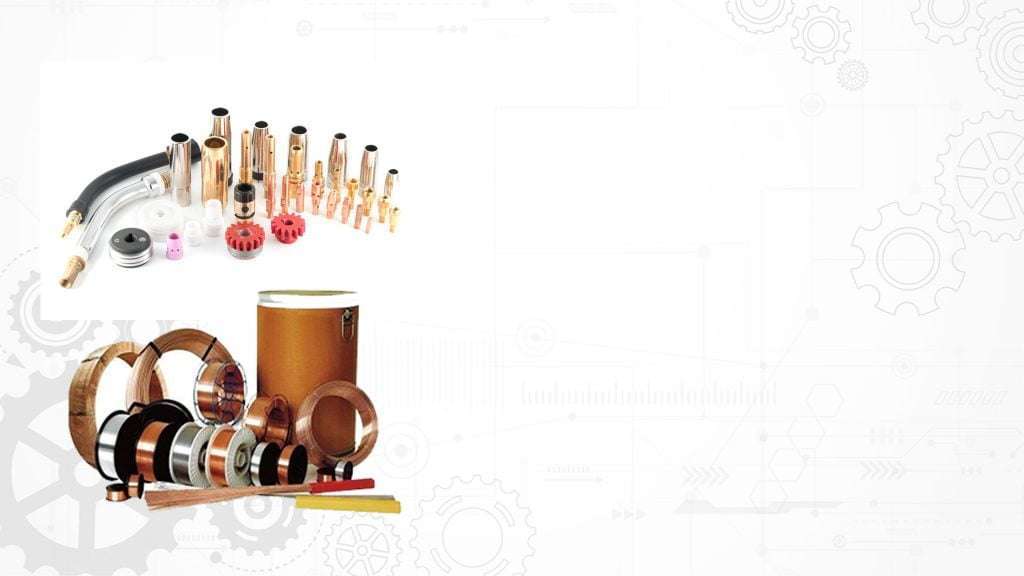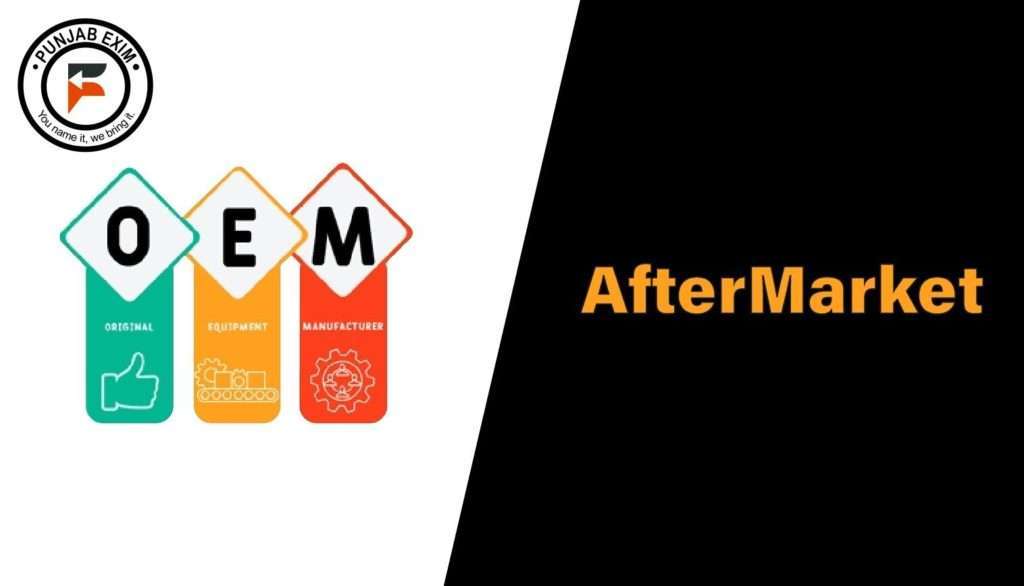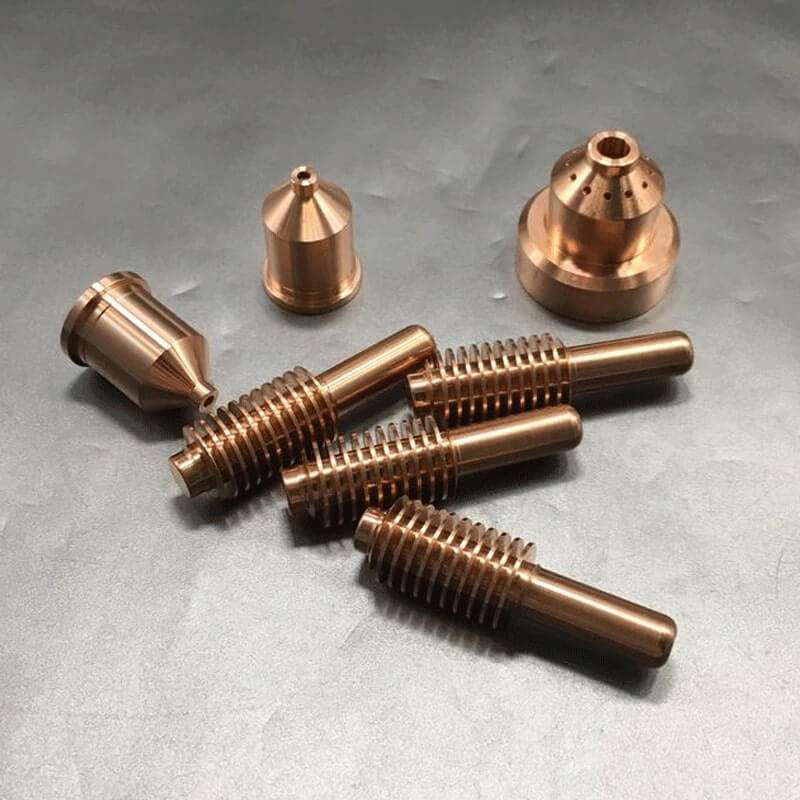Original and aftermarket consumables used in fabrication play significant roles in manufacturing, each with its own advantages and considerations. Fabrication processes often rely on consumables to achieve precision and quality in manufacturing. However, the choice between original (OEM) and aftermarket consumables can significantly impact production, costs, and overall output. Understanding the differences between these options is crucial for businesses aiming to optimize their fabrication operations. Today we we will be diving deep into the actual consideration of the fact, that what should be used in fabrication? Well, it depends upon a lot of factors. Don’t worry, we have got everything covered for you in this article. After reading it, we are sure that you will have zero doubts left about which consumables you should actually use in the fabrication. Let’s get started.
Table of Contents
Introduction:
Precision and quality in making things rely a lot on using the correct materials and parts, especially in fabrication processes. When it comes to fabrication, businesses have two main choices for the parts they use: original parts or parts made by other companies, often called aftermarket parts. The decision between these two options can have a big impact on several important things like how much a business produces, how much they spend on making things, and the overall quality of what they make.
Choosing between original parts and aftermarket parts isn’t just about picking items off a shelf. It’s a decision that influences many aspects of a business. For instance, picking original parts often means using parts made by the same company that made the machinery. They might be more expensive, but they are usually known for their high quality and are made to fit perfectly with the equipment.
On the other hand, aftermarket parts are made by other companies, and they often cost less. They might also offer some different features or options that the original parts don’t have. However, there could be concerns about their quality, compatibility with the machinery, and their impact on how well the equipment performs.
For businesses looking to improve their fabrication processes, understanding the differences between these options is really important. It’s not just about what parts you use, it’s about how those parts affect your production, the costs involved, and the quality of what you make. So, knowing about these choices and considering the best fit for your business is a crucial step in making sure your fabrication processes run smoothly and effectively.
Original (OEM) Consumables:
Original Equipment Manufacturer (OEM) consumables are components specifically designed and recommended by the machinery manufacturer. They are engineered to exact specifications, ensuring compatibility and performance. These consumables often come with a premium price tag but are known for their quality, reliability, and compatibility with the equipment. Let’s have a look at their merits :
- Quality Assurance: OEM consumables are typically manufactured and supplied by the original equipment manufacturer. They are designed to meet the highest quality and performance standards, ensuring consistency in fabrication processes.
- Compatibility: OEM consumables are specifically engineered to work seamlessly with the original equipment or machinery. This ensures a precise fit and optimal performance, reducing the risk of compatibility issues.
- Warranty and Support: Using OEM consumables often comes with the benefit of warranty coverage and support from the equipment manufacturer. This can be valuable in case of defects or issues during fabrication.
- Longevity: OEM consumables are designed for durability and longevity, which can result in fewer replacements and downtime, ultimately reducing long-term costs.
- Performance: Since OEM consumables are designed to work in harmony with the original equipment, they often deliver the best possible performance, leading to higher efficiency and quality in fabrication.
- Safety: OEM consumables are typically tested and certified to meet safety standards, reducing the risk of accidents or hazards during fabrication.
Aftermarket Consumables:
Aftermarket consumables are produced by third-party manufacturers and are often available at a lower cost compared to OEM parts. While they might offer cost savings, there are considerations regarding their quality, compatibility, and impact on equipment performance. Let’s have a look at their merits too :
- Cost Savings: Aftermarket consumables are generally more affordable than OEM options, making them an attractive choice for businesses looking to reduce fabrication costs.
- Variety and Availability: Aftermarket consumables come in a wide range of options from various manufacturers. This variety can provide more choices in terms of pricing, features, and specifications.
- Competition: The presence of competition among aftermarket consumable manufacturers can drive innovation and lead to improved product quality and cost-effectiveness.
- Customization: Some aftermarket consumables can be customized to meet specific fabrication needs, allowing for greater flexibility in the manufacturing process.
- Availability: Aftermarket consumables are often readily available from multiple suppliers, reducing lead times and downtime when replacements are needed.
- Value for Money: While aftermarket consumables may not always match the exact quality of OEM parts, they can offer good value for money when the balance between cost and performance is considered.

Key Considerations Before Choosing:
- Performance Impact: Assess how the choice of consumables might affect the precision, quality, and longevity of the fabrication process and end products.
- Equipment Warranty: Determine if the use of aftermarket consumables will void equipment warranties or impact service agreements.
- Quality Assurance: Research the reputation and reliability of aftermarket brands to ensure the products meet necessary standards.
- Cost Analysis: Consider the balance between upfront cost savings and potential long-term expenses related to equipment maintenance or downtime.
- Compatibility and Fit: Verify compatibility and fitment with your machinery to avoid operational disruptions or damage.
- Supplier Reliability: Evaluate the credibility and reliability of aftermarket suppliers to ensure consistent availability and service.
Summary
In summary, the choice between original (OEM) and aftermarket consumables in fabrication depends on various factors, including budget constraints, the importance of quality and performance, equipment warranties, and the specific needs of the manufacturing process. Many businesses opt for a combination of both, using OEM consumables for critical processes where quality and performance are paramount and aftermarket consumables for less critical applications to achieve cost savings. Ultimately, the decision should align with the overall goals and priorities of the fabrication operation.
For more such freshly brewed content about the Fabrication Industries, Do Follow Us.
Learn about which method of cutting is cost-beneficial and sustainable: Precision or Power: Exploring the Clash Between Plasma and Laser Cutting Techniques
Trending Topic: Powermax SYNC® series
Follow us on :



Gobind Pajiyar January 3, 2024
Very useful information, Thankyou for sharing it